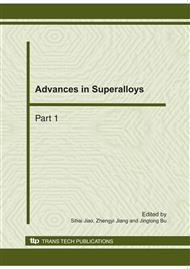p.1843
p.1849
p.1855
p.1859
p.1863
p.1870
p.1874
p.1878
p.1885
Stress Distribution Characteristics of Different Laser Welding Joints
Abstract:
For quantitatively understanding the influences of the welded lap joint forms on the stress concentration, six different forms of overlap joints were designed, and then the stress distribution characteristics of these overlap joints were carried out in this paper. The results show that, the stress concentration of the model (a) and (b) are the highest level; and the stress concentration of the model (c) and (d) are significantly lower; the stress concentration of the model (e) is even lower than that of model (c) and (d); the stress concentration of the model (f) is zero.
Info:
Periodical:
Pages:
1863-1869
Citation:
Online since:
October 2010
Authors:
Price:
Сopyright:
© 2011 Trans Tech Publications Ltd. All Rights Reserved
Share:
Citation:


